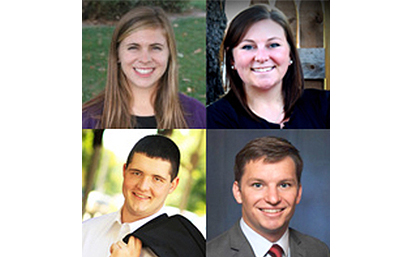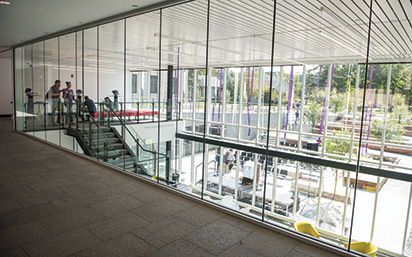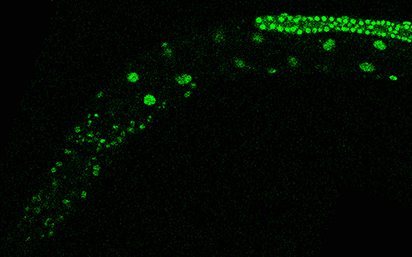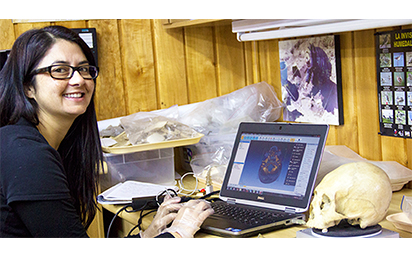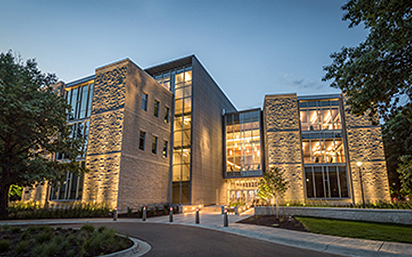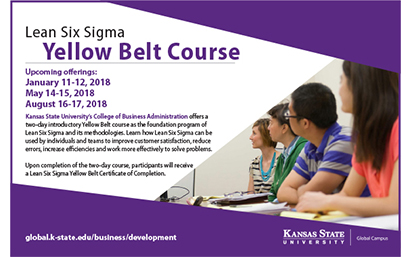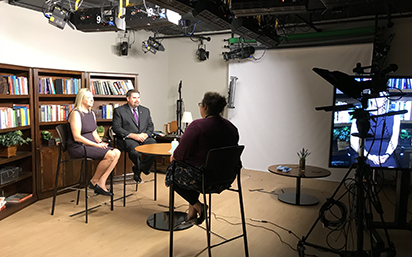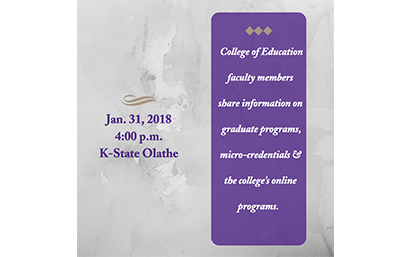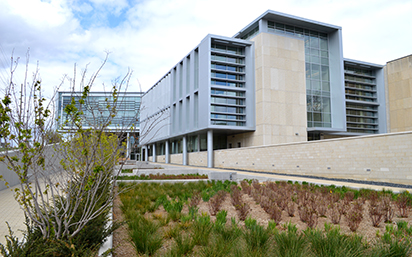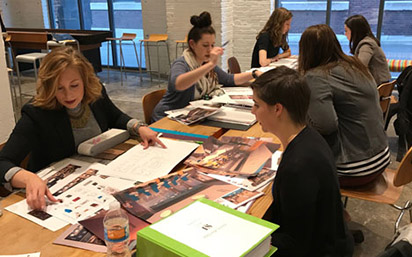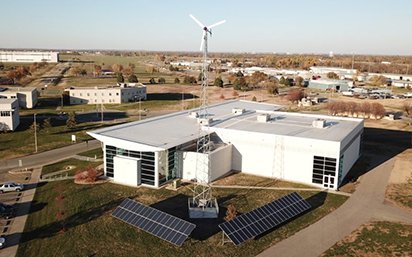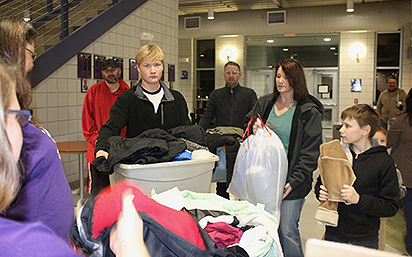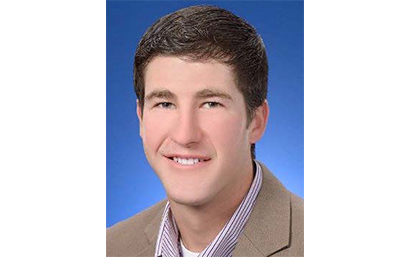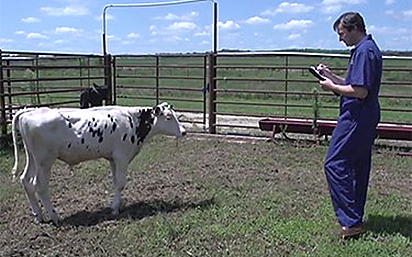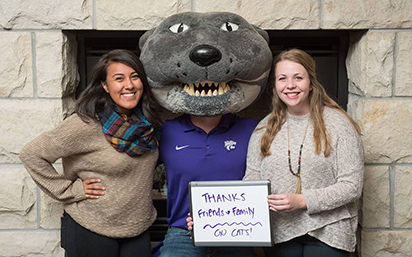
Pomp and circumstance: More than 1,500 earn degrees from K-State in fall commencement
Graduates celebrated the ending of one journey and the beginning of another, as they received their degrees during Kansas State University’s fall commencement ceremonies and now prepare, as K-State alumni, to embark on their new careers.
K-State recognized more than 1,500 students as candidates for degrees during fall commencement ceremonies Dec. 8-9. The university awarded more than 1,300 bachelor’s degrees, 240 master’s degrees and nearly 50 doctorates. Around 170 of the degree candidates were distance education students.
“Today as you receive your degree, we are honored to recognize you and all you have accomplished,” K-State Alumni Association President and CEO Amy Button Renz ’76, ’86 told students during commencement. “I am pleased to be part of this special day and offer congratulations on behalf of the K-State Alumni Association representing over 250,000 graduates and friends who will be your lifelong K-State family.”
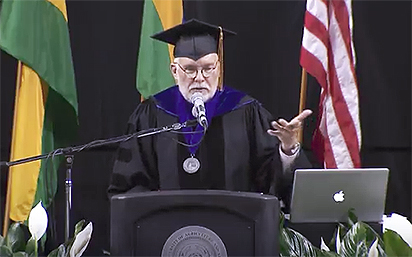 During the Graduate School commencement ceremony, K-State also presented an honorary
doctorate to photographer Jim Richardson ’17. Growing up on a farm near Belleville, Kansas, Richardson developed a passion for
photography at a young age, displaying his prize-winning photos at the county fair.
As a student at K-State, his photos appeared in the Kansas State Collegian. Those experiences were the seeds that grew into a career as a photographer for National Geographic magazine and its sister publication, Traveler, giving Richardson an opportunity to travel across the globe and bring stories to
life through the images he captured.
During the Graduate School commencement ceremony, K-State also presented an honorary
doctorate to photographer Jim Richardson ’17. Growing up on a farm near Belleville, Kansas, Richardson developed a passion for
photography at a young age, displaying his prize-winning photos at the county fair.
As a student at K-State, his photos appeared in the Kansas State Collegian. Those experiences were the seeds that grew into a career as a photographer for National Geographic magazine and its sister publication, Traveler, giving Richardson an opportunity to travel across the globe and bring stories to
life through the images he captured.
As he reflected on his career, Richardson spoke of the importance of continuing to grow and change, encouraging graduates to use their K-State education as a starting point to continue learning, innovating and exploring.
“When I look out and I see you, I see the signs of inner change,” he addressed the graduates. “All of you have somehow remade yourselves into something new. Please remember this: that having once remade yourselves, you can do it again and again.”
Alumni Association celebrates graduates
 The K-State Alumni Association invited fall graduates to celebrate commencement at
a special Grad Breakfast on Dec. 7. Graduates enjoyed a free breakfast served by members of the K-State administration,
networked with other graduates and received a free T-shirt. They also had the opportunity
to share messages of thanks through K-State’s #GradGratitude photo booth.
The K-State Alumni Association invited fall graduates to celebrate commencement at
a special Grad Breakfast on Dec. 7. Graduates enjoyed a free breakfast served by members of the K-State administration,
networked with other graduates and received a free T-shirt. They also had the opportunity
to share messages of thanks through K-State’s #GradGratitude photo booth.
The K-State Alumni Association partners with the colleges to provide all new graduates with a complimentary one-year membership to the Alumni Association. The Alumni Association also presents undergraduates with a business card holder and graduate students with a lapel pin.
Do you know any K-Staters who will be graduating in May? Be sure to tell them to watch for more information on our spring commencement activities, such as Grad Expo, Grad Bash, Multicultural Graduation Celebration and International Graduation Celebration.


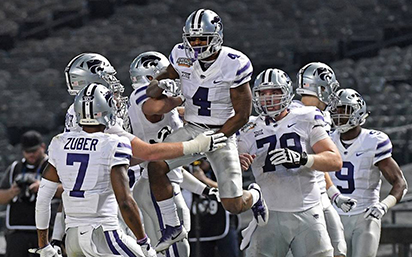
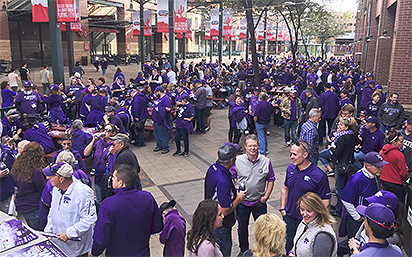
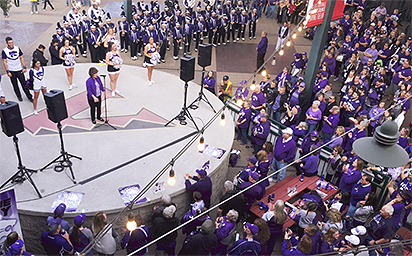

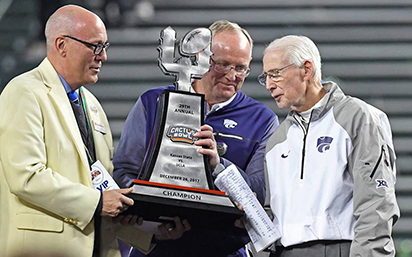
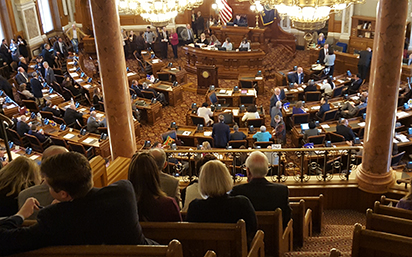
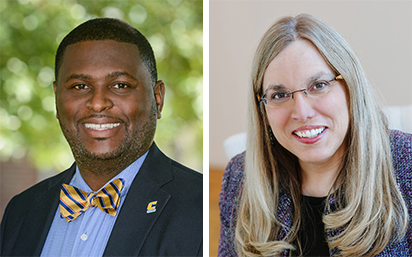
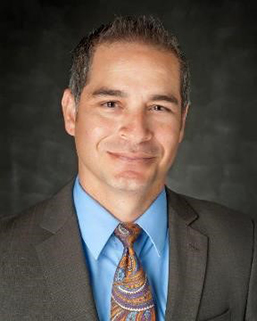 “It is a distinct privilege to serve as a member of the K-State community and I am
excited to work with all campus constituents,” Samuel said. “Joining a nationally
recognized institution with such an unswerving commitment to diversity and inclusion
is indeed an honor. I look forward to working alongside President Myers and his cabinet
as we move K-State forward in our ongoing efforts to meet the needs and interests
of a global and diverse society.”
“It is a distinct privilege to serve as a member of the K-State community and I am
excited to work with all campus constituents,” Samuel said. “Joining a nationally
recognized institution with such an unswerving commitment to diversity and inclusion
is indeed an honor. I look forward to working alongside President Myers and his cabinet
as we move K-State forward in our ongoing efforts to meet the needs and interests
of a global and diverse society.”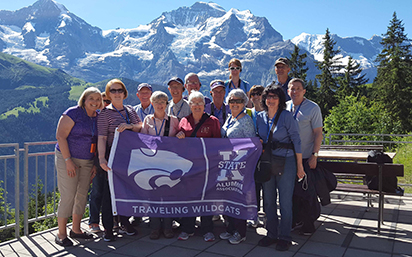
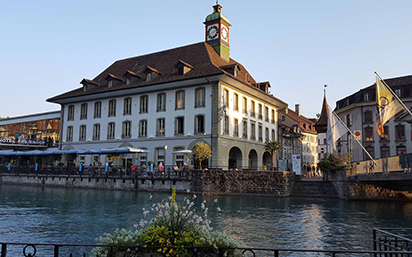 We climbed aboard a chartered bus for a two-hour drive from the airport to Thun, Switzerland,
where we checked into Hotel Freienhof, a charming hotel along a waterfront promenade
in the center of town. The Bernese Alps, capped with snow, provided a majestic backdrop
to this seemingly fairytale experience.
We climbed aboard a chartered bus for a two-hour drive from the airport to Thun, Switzerland,
where we checked into Hotel Freienhof, a charming hotel along a waterfront promenade
in the center of town. The Bernese Alps, capped with snow, provided a majestic backdrop
to this seemingly fairytale experience. 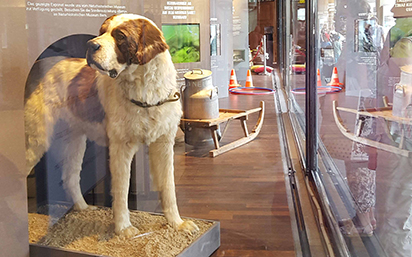 Today we rode the train from Thun to Bern, the Swiss capital. Our walking tour of
the city included the government plaza, the Gothic Cathedral of Bern, one of Einstien’s
homes, an outdoor market and beautiful views of the city. The prominent Clock Tower
in the center of town drew large crowds as swirling wooden figures danced to the chimes
at the top of each hour. In Bern we learned about Barry, a Saint Bernard and the country’s
most famous avalanche rescue dog who, years ago, saved 40 people while working the
Great Saint Bernard Pass.
Today we rode the train from Thun to Bern, the Swiss capital. Our walking tour of
the city included the government plaza, the Gothic Cathedral of Bern, one of Einstien’s
homes, an outdoor market and beautiful views of the city. The prominent Clock Tower
in the center of town drew large crowds as swirling wooden figures danced to the chimes
at the top of each hour. In Bern we learned about Barry, a Saint Bernard and the country’s
most famous avalanche rescue dog who, years ago, saved 40 people while working the
Great Saint Bernard Pass.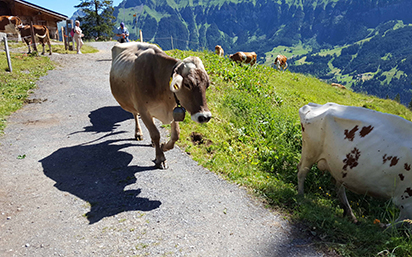 It was our last day in Thun. We started with a journey by train to Lauterbrunnen Valley
where we hiked a fragrant flower trail to the village of Mürren. Along the trail,
like many other trails we hiked in Switzerland, we shared the path with the local
dairy cows who were friendly enough to let us pet them. Now having been raised on
a dairy farm in central Kansas, it was fascinating for me to see the cows roam freely
along the mountainside — no fences anywhere! The Swiss farmers keep track of their
herds by listening for the iconic bells swaying from the cows’ necks. Little wooden
cheese huts dotted the mountainside and were used for storing and aging the Alpine
cheese. We learned it can only be called Alpine cheese if the cheese is actually made
up in the mountains. During the winter months the cows move down the mountains to
the farms in the valleys.
It was our last day in Thun. We started with a journey by train to Lauterbrunnen Valley
where we hiked a fragrant flower trail to the village of Mürren. Along the trail,
like many other trails we hiked in Switzerland, we shared the path with the local
dairy cows who were friendly enough to let us pet them. Now having been raised on
a dairy farm in central Kansas, it was fascinating for me to see the cows roam freely
along the mountainside — no fences anywhere! The Swiss farmers keep track of their
herds by listening for the iconic bells swaying from the cows’ necks. Little wooden
cheese huts dotted the mountainside and were used for storing and aging the Alpine
cheese. We learned it can only be called Alpine cheese if the cheese is actually made
up in the mountains. During the winter months the cows move down the mountains to
the farms in the valleys. 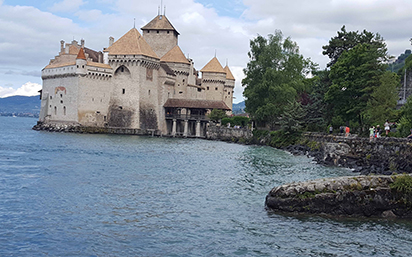 We traveled by bus to the Edwardian town of Monteaux, where artists, musicians and
literati have flocked for centuries. Charlie Chaplin. Ernest Hemingway. Even Freddie
Mercury, who is immortalized in a statue along the waterfront of Lake Geneva. Following
a brief walking tour of Monteaux, we cruised Lake Geneva to reach an 800-year-old
castle, Chateau de Chillon, that inspired Lord Byron’s epic poem, “The Prisoner of
Chillon.” The dungeon area of the castle was actually a prison at one time and was
filled with shackles. From there, we went back to our hotel for a quiet evening.
We traveled by bus to the Edwardian town of Monteaux, where artists, musicians and
literati have flocked for centuries. Charlie Chaplin. Ernest Hemingway. Even Freddie
Mercury, who is immortalized in a statue along the waterfront of Lake Geneva. Following
a brief walking tour of Monteaux, we cruised Lake Geneva to reach an 800-year-old
castle, Chateau de Chillon, that inspired Lord Byron’s epic poem, “The Prisoner of
Chillon.” The dungeon area of the castle was actually a prison at one time and was
filled with shackles. From there, we went back to our hotel for a quiet evening.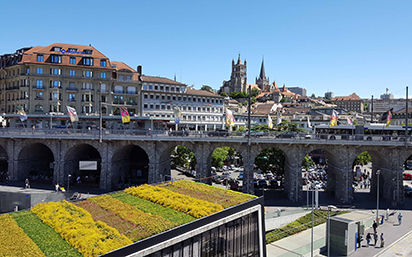 It was the final day of our trip; we experienced two countries and a lake all in one
day: Lausanne, Switzerland, Lake Geneva, and Evian, France. Lausanne is a cosmopolitan
city, filled with universities, international businesses, a vibrant urban area and
a medieval Old Town. Our guide wove bits of history into her stories as we walked
through Old Town.
It was the final day of our trip; we experienced two countries and a lake all in one
day: Lausanne, Switzerland, Lake Geneva, and Evian, France. Lausanne is a cosmopolitan
city, filled with universities, international businesses, a vibrant urban area and
a medieval Old Town. Our guide wove bits of history into her stories as we walked
through Old Town.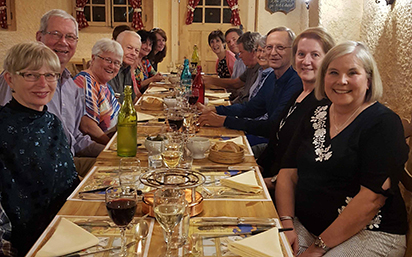 Our day concluded at the hotel with a parting dinner to celebrate our travels, discoveries
and new Wildcat friendships. And we were not disappointed for we finally experienced
a traditional Swiss fondue dinner, complete with fondue pots right out of the 1960s.
It was fun.
Our day concluded at the hotel with a parting dinner to celebrate our travels, discoveries
and new Wildcat friendships. And we were not disappointed for we finally experienced
a traditional Swiss fondue dinner, complete with fondue pots right out of the 1960s.
It was fun. 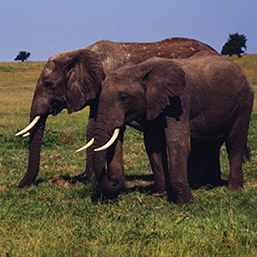



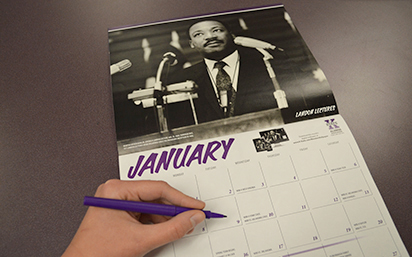


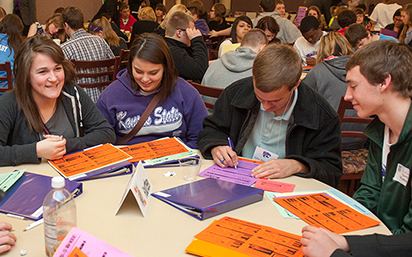
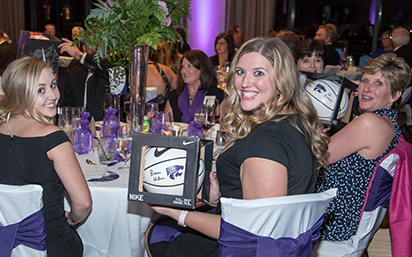
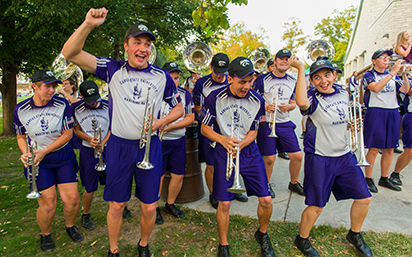
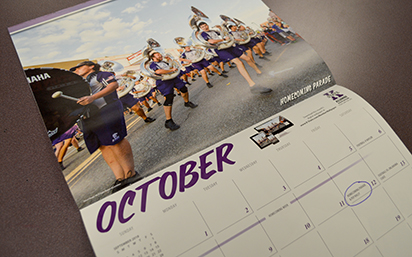
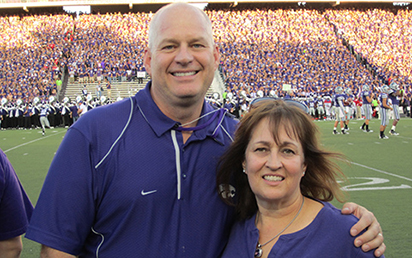
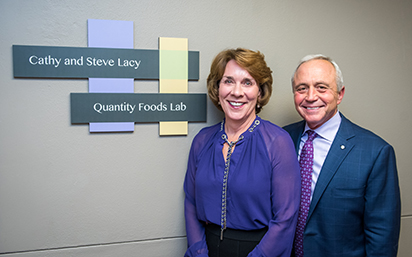 Cathy ’79 and Steve ’76, ’77 Lacy of Des Moines, Iowa, have given $1 million to support
three programs at K-State: The Department of Hospitality Management and the Department
of Food, Nutrition, Dietetics and Health in the college of Human Ecology and the Career
Coach program in the College of Business Administration.
Cathy ’79 and Steve ’76, ’77 Lacy of Des Moines, Iowa, have given $1 million to support
three programs at K-State: The Department of Hospitality Management and the Department
of Food, Nutrition, Dietetics and Health in the college of Human Ecology and the Career
Coach program in the College of Business Administration.
